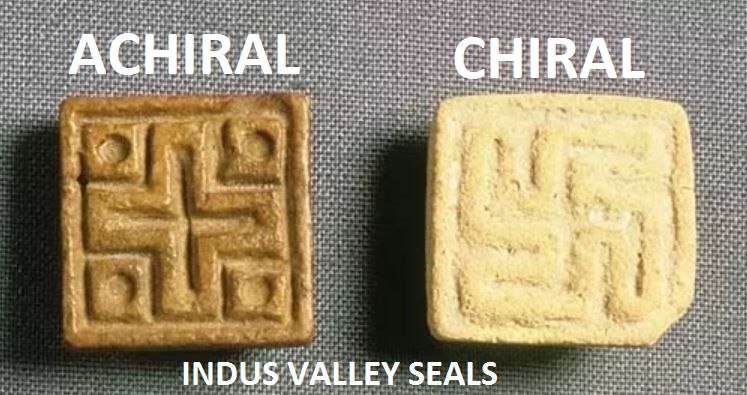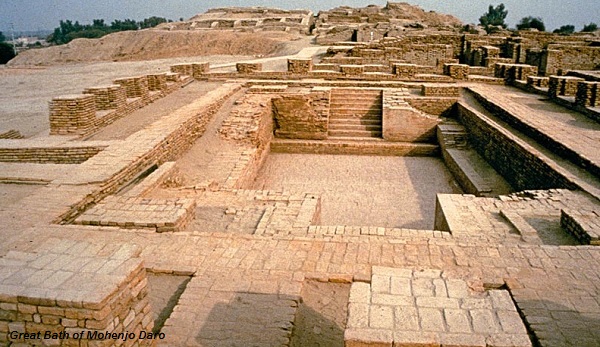Even after the decline of Harappan civilization many of its essential elements could continue in later phases of Indian history. These elements could be seen by having a glance at modern culture even today. The multiclass character, multiethnic character, secular outlook. The matriarchal outcome of society & materialistic Outcomes continued in the later period. The Early Vedic Aryans were also materialistic in their outlook because they worship their god & goddess for cattle wealth, victory in battle & to have sons.
The elements of Harappan political life could also see in later phases of Indian History. Mauryan administration & Gupta administration were centralized in nature even modern administration centralized. The urban administration bodies of the Harappan type could be seen in the Mauryan period because of the city of Patliputra administration by a council of 30 members.
The burial practices of Harappan continued through ages. These are prevalent even today. Most of the elements of the Harappan religion continued into the later period. Many dimensions of the Harappan economy survived the decline of this civilization. Knowledge of agriculture didn’t die out crafts like pottery, seal making, metallurgy & stone cutting, etc. continued during later periods.
The symbol of Swastika is coming down from Harappan Civilization. It is used in religious activities even today because it is considered to be pious. The game of chess can also be traced to Harappan civilization because evidence of chessboard has been found. The knowledge of music & dance also continued in later periods.

Harappan used multiple stringed harps like an instrument. The knowledge of birds & animals of Harappan civilization also contributed to a later period. The means of exportation used by Harappan to form of carts, boats continued to be used during later periods. The settled life of Harappan people the knowledge of houses made of burnt bricks, knowledge of digging wells, and square pillars used by Harappan continued into later periods. The metallurgical knowledge of Harappan people also continued because gold, silver, tin, copper, etc. were used in India throughout history.
Significance of Seals of Harappan Civilization
The seals & sealing constitute one of the most important sources to understand Harappan civilization the archaeological excavation has discovered around 2500 seals. The size of seals varies from 0.5 inches to 2.5 inches. Most of the seals made up of steatite. Some metal seals have also been found.

Harappan seals are quadrilateral in shape. Various symbols are found on seals. The examination of these Harappan seals through light on the socio-eco-religious cultural & political life of this great civilization. The discoveries of seals from Harappan settlement indicate that seal making was an important craft & seal makers formed a part of the Harappan population.
Seals are an important excavation of miniature art (art on small scale) of Harappan. On a seal found at Lothal, a harp-like musical instrument is depicted. Harappan was aware of music. Seals contain pictographic script used by Harappan. Since seals were made by common people & were used commonly, it appears that most of the Harappan people were literate.
The birds & animals depicted on seals helped in understanding the knowledge of birds & animals of Harappan. The bull is the most commonly depicted animal. This indicates that bull was having great significance in the life of the Harappan people. Fish is the most commonly depicted zoomorphic significance (loving significance). This indicates that Harappan practiced fishing.
Seals through light on Harappan external contact. A cylindrical seal of Mesopotamia civilization was found at Mohenjodaro. Persian Gulf seal was found at Lothal. These seals confirm that Harappan maintained trade & commercial relations with these regions. Seals through light on various dimensions of the religious life of Harappan civilization.
The mother goddess, proto-shiva & fertility deity are depicted on seals. The depiction of the bull on seals indicates animal worship. The black marks found on the seal indicate something like oil & fragrance was burnt by Harappan to please their deity. The square & rectangle shape of Harappan seals through light knowledge of geometry.
The materials of which seals are made reveal the material culture of Harappan civilization. Uniformity found among various Harappan settlements indicates that civilization was administered by the central authority.
The Harappa
Harappan cities are divided into two parts – known as upper town & lower town. There was open ground between the two. The lower town was located east of the upper town. Only at Dholavira (Gujarat), the city was divided into 3 parts. There was a middle town located between the upper town & lower town.
The upper town was surrounded by a fort/citadel (Fort). At Surkotada & Kalibangan even the lower town was fortified. At Chanhudaro there was not fort. Both parts of Harappan cities were laid out in a planned manner. Harappan followed the chessboard pattern/ grid pattern.
Details of City Planning

The main street in Harappan cities moved from north to south direction. It was about 30 feet wide. The main street was interested in several narrow lanes at the right angle. The houses were built alongside the lane.
There was small no mainland between two houses (free areas – walls are not touching each other). Harappan houses comprised two or more rooms build-around a courtyard. The doors were on one side of the wall. In one corner of the house, the kitchen was built. Windows were absent, ventilators were there. Some houses had a double story. The staircase was probably wooden because no evidence has been found.
Mohenjodaro is a type site (most representative site/site from most of the features of civilization that have been discovered). In Mohenjo-Daro, almost every house had a well. There was public well on every street. More than 700 wells had been found in the city of Mohenjodaro. Every street was having underground covered drainage.
The drains of side lanes opened in the bigger drain of the main street. The drainage had manholes at regular intervals which were used to clean the drainage. There were soak pits in drainage for recharging of the underground water table. This indicates that Harappan practiced water harvesting. The left-out water in drains is carried to the field for irrigation purposes. Harappan collected rainwater in pounds.
16 water reservoirs have been found at Dholavira. One reservoir was so big so that it could store more the 250000 cubic meters of water. Some of these reservoirs were interconnecting. This indicates that Harappan new technology of water filtration by using a method of sedimentation.
These pounds were filled by collecting rainwater in that area. In this way, Harappan conserved each & every drop of water available to them. It was because of this highly advanced system of water management, Harappan cities like Dholavira could flourish in arid regions where water was external scarce. Dams were built by Harappan in rivers for flood irrigation. The Harappan used to flush toilets. Harappan first in would have such toilets.
The discovery of evidence of such toilets indicates that Harappan was concerned about Sanitation. To protect cities from the threat of flash floods. The upper town was built at some height concerning the lower town. It was surrounded by a strong fort. All important installation was located within this fort.

